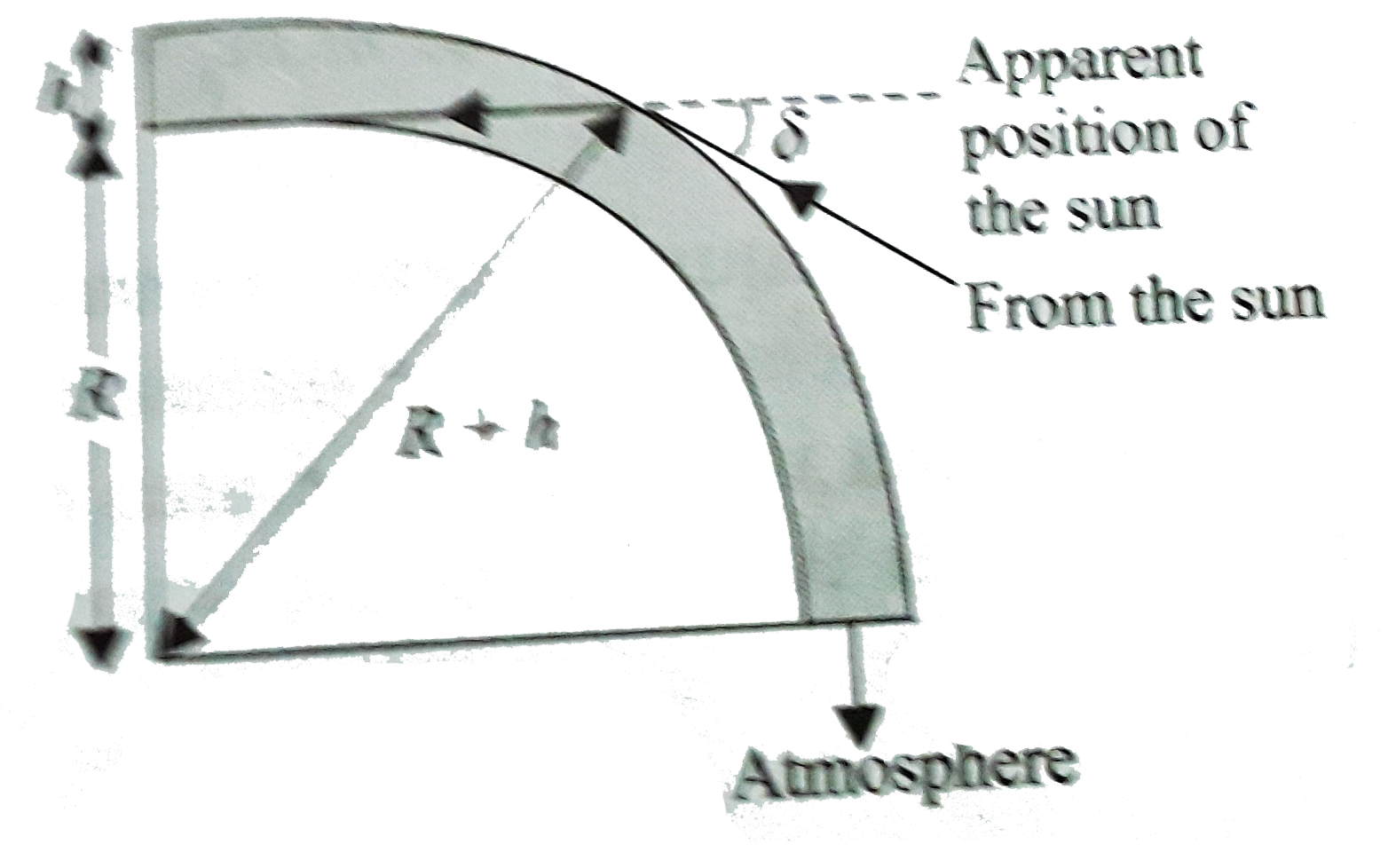When the sun is either rising or setting and appears to be just in the horizon, it is in fact below the horizon. The explanation for this seeming paradox is that light from the sun bends slightly when entering the earth's atmosphere as shown in figure. Assume that the atmosphere has uniform density and hence uniform index of refraction n and extends to a height h above the earth's surface, at which point is abruptly stop. The angle δ above the Sun's true position is given by

A
sin−1(nRR+h)
B
sin−1(RR+h)
C
sin−1(nRR+h)+sin−1(RR+h)
D
sin−1(nRR+h)−sin−1(RR+h)
Video Solution
Text Solution
The correct Answer is:d.
By snell's law
sin(θ+δ)sinθ=n
sinθ=R(R+h)
sin(θ+δ)=nR(R+h)
δ=sin−1(nRR+h)−sin−1(RR+h)

|
Topper's Solved these Questions
- GEOMETRICAL OPTICSBook:CENGAGE PHYSICS ENGLISHChapter:GEOMETRICAL OPTICSExercise:Assertion-Reasoninig
Explore 2 Videos
- GEOMETRICAL OPTICSBook:CENGAGE PHYSICS ENGLISHChapter:GEOMETRICAL OPTICSExercise:Linked Comprehension
Explore 51 Videos
- GEOMETRICAL OPTICSBook:CENGAGE PHYSICS ENGLISHChapter:GEOMETRICAL OPTICSExercise:Subjective
Explore 26 Videos
- ELECTRON,PHONTS,PHOTOELECTRIC EFFECT & X-RAYSBook:CENGAGE PHYSICS ENGLISHChapter:ELECTRON,PHONTS,PHOTOELECTRIC EFFECT & X-RAYSExercise:dpp 3.3
Explore 15 Videos
- HEATING EFFECT OF CURRENTBook:CENGAGE PHYSICS ENGLISHChapter:HEATING EFFECT OF CURRENTExercise:Thermal Power in Resistance Connected in Circuit
Explore 27 Videos
Similar Questions
Knowledge Check
Light from the sun reaches the earth approximately in
A5sB50sC500sD0.5sIn the white light of the Sun, maximum scattering by the air molecules present in the earth's atmosphere is for :
AA) red colourBB) yellow colourCC) green colourDD) blue colour.
Ozone layer above earth's atmosphere will not
View SolutionThe temperature of earth's atmosphere increases with height in
View SolutionFind work done in shifting a body of mass m from a height h above the earth's surface to a height 2h above the earth's surface..
View SolutionVariation of atmospheric pressure, with height from earth is
View SolutionWhen sunlight enters the earth's atmosphere, state which colour of light is scattered (i) the most, and (ii) the least.
View SolutionAssuming the earth to be a sphere of uniform mass density, how much would a body weigh half way down to the centre of the earth if it weighd 250 N on the surface ?
View Solution